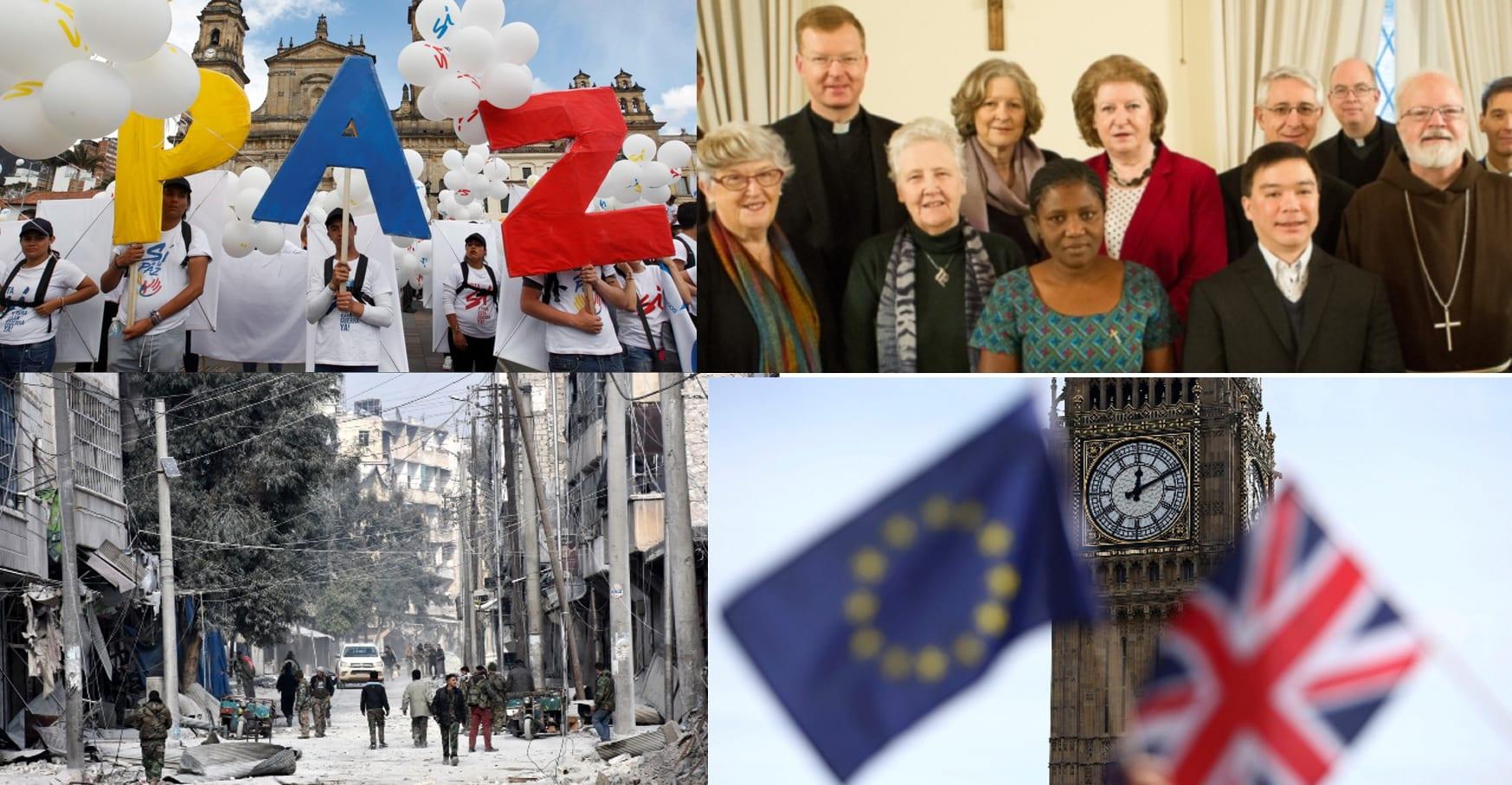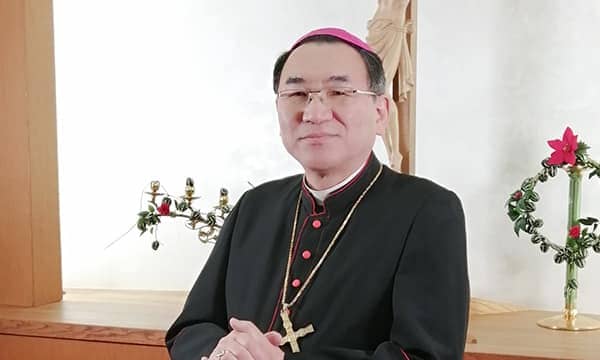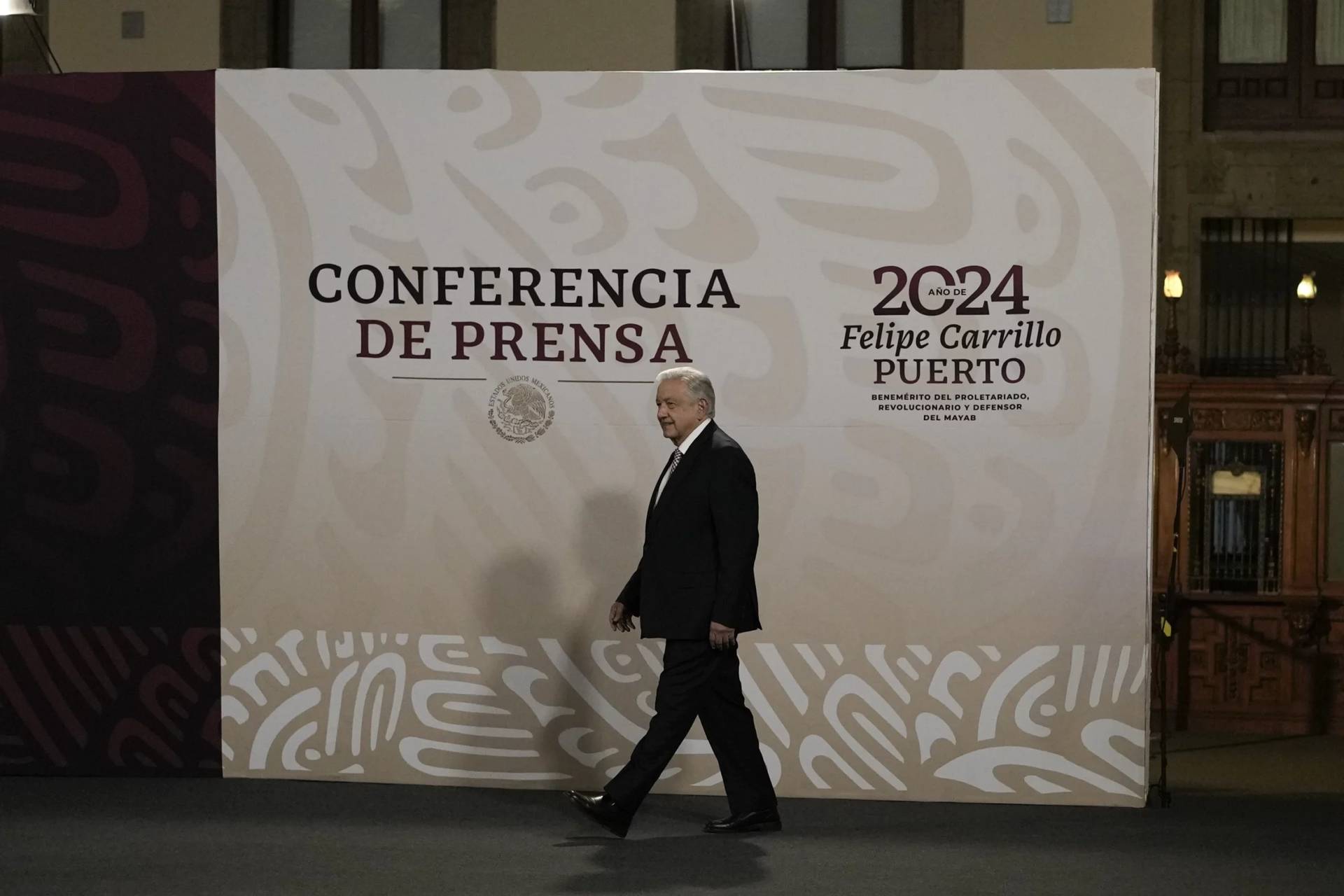[Editor’s note: For the entire world, including the Catholic Church, 2016 was a tumultuous and in some ways stunning year. From the Catholic take on Brexit in the U.K. to Trump v. Clinton in the U.S., from Pope’s Francis’s six overseas trips to his widely discussed document on the family Amoris Laetitia, to the scores of new martyrs in various parts of the world to a remarkable renaissance for the faith elsewhere, the past 12 months had almost as many plot turns and surprise twists as a potboiler novel – with the key difference that it all actually happened.
In this three-part series, Crux’s Inés San Martín reviews 2016 through a Catholic lens. Part one examined an eventual year for the Catholic Church in the United States; part two looks at the Global Church, and part three hits the highlights of another remarkable year for Pope Francis, who capped 2016 by celebrating his 80th birthday.]
ROME — Choosing the key Catholic storylines of 2016 on the global scene is a complicated task, mostly because there’s an almost infinite set of contenders.
For instance, there are wars and conflicts being waged in Syria, Iraq, the Central African Republic, South Sudan, Nigeria, and Yemen, where according to the United Nations six million children risk dying of starvation. Then there’s the tug-of-war over the peace process in Colombia, which could end a decades old civil conflict.
Yet, here are some key developments which, when history looks back on 2016, either will be, or at least should be, remembered as pivotal moments.
Brexit and the “no” to the peace accord in Colombia
Arguably the first real political stunner of 2016, the United Kingdom’s June referendum in favor of leaving the European Union was taken as a defeat for European Catholicism, which has long been an agent in favor of continental unity.
Think, for instance, of German statesman Robert Schuman, one of the founders of the EU, who’s currently on track to be declared a saint.
In the months leading up to the vote, Pope Francis chose to stay out of the debate, emphasizing the importance of respecting the “sovereignty” of each nation.
Yet seeing that he’s put strong emphasis in a society that builds bridges and a Europe that is welcoming towards migrants, the vote, which was in no small measure fueled by an unwillingness to welcome refugees arriving in Europe from Africa and the Middle East, was perceived as a loss by many in the Vatican.
On a return flight to Rome from a trip to Armenia in late June, after the Brexit vote, Francis said that “something is not working in this massive union” and called for “more independence and freedom to each country” of the EU.
“Think of another form of union, be creative,” he told journalists, but discarding the possibility of putting an end to it. The crisis in the EU, Francis said, does not mean “we throw out the baby with the bathwater.”
Days later, with the ink on the divorce papers between the UK and the EU not yet dry, Francis released a video warning that Europe today seems to be building “walls of political and economic selfishness, without respect for the life and dignity of every person.”
Without mentioning Brexit, the pontiff said that a spirit of unity in Europe today is “more than ever necessary.”
Speaking about the continent’s future, at a time when countries such as Germany and France fear a domino effect after the UK’s decision, Francis said that for Europe to be a “family of peoples” it needs to put the human person “back at the center.”
“It should be an open and welcoming continent, and continue to establish ways of working together that are not only economic but also social and cultural,” he said.
Many in the Catholic hierarchy grabbed the bull by the horns, so to speak, and addressed the Brexit issue upfront.
Cardinal Vincent Nichols, archbishop of Westminster, spoke soon after the vote, responding to a number of incidents reported across the country with xenophobic tendencies.
“This upsurge of racism, of hatred towards others is something we must not tolerate,” he said. “We have to say this is simply not acceptable in a humane society and it should never be provoked or promoted.”
The cardinal also said that “every leader needs to reflect on our failure to listen and to give voice to those who feel voiceless,” adding that “our purpose must be our common good, the good of all with no one excluded.”
Cardinal Reinhard Marx, President of the Commission of the Bishops’ Conferences of the European Community described the result as “regrettable.” Noting that the EU was a “project of community and solidarity,” the German prelate said that “conscious withdrawal of a member is therefore painful and has consequences for all.
“The increasing nationalism in some countries must not become again the trigger of ideological delimitation, hostility and discord. As Church, we will commit ourselves to this with full force,” he said.
Seen from afar, the October referendum in Colombia on a peace deal signed between President Juan Manuel Santos and the Revolutionary Armed Forces of Colombia (FARC) could seem insignificant. However, it could have ended a six-decade old war, which has claimed an estimated 220,000 lives, and that’s a low-end figure.
Among the victims, there are two Catholic bishops, 85 priests, eight religious men and women and two seminarians, all killed since 1984. For years, Colombia was considered the world’s most dangerous country to be a priest.
The Catholic Church in Colombia played a key role in rebuilding trust between the former enemies, yet when the peace deal was announced, it was greeted with caution. As Archbishop Luis Augusto Castro, of Tunja, put it at the time, “It’s one thing to stop war…it’s quite another to build peace.”
Francis too, has been a key player in the peace accord, and kept working on it after the popular vote said “no” to the original deal in October.
The “no” campaign had several elements to it, but the opposition to Santos was led by former Colombian president Alvaro Uribe. As an early Christmas present to the country that eagerly awaits the announcement of a papal visit for 2017, the pontiff managed to get the two together on December 16, for a face-to-face, 25 minute meeting.
Anti-Christian violence
Although it’s an issue that arose well before January 2016, and which will undoubtedly continue past the end of December 2016, there were several instances of violence against Christians that deserve to be remembered.
Starting with the most recent incident, on December 11 a bombing at a chapel adjacent to Egypt’s main Coptic Christian cathedral killed 25 people and wounded another 49 during Sunday Mass, in one of the deadliest attacks carried out against the religious minority in recent memory.
In the Middle East, particularly in Syria and Iraq, the death toll is much higher, and virtually impossible to assess. However, several governments, including the United States, have acknowledged that the Islamic State (ISIS) is perpetrating genocide against Christians and other minorities such as the Yazidis.
Although it’s triggered no immediate changes in U.S. foreign policy nor moved the needle in the acceptance of refugees and asylum seekers, the label is nevertheless important since both domestic and international law require that acts of genocide be investigated and those responsible indicted and prosecuted.
Religiously-fueled violence has also been the order of the day in several African countries.
In August, the new leader of Nigeria’s Boko Haram vowed to kill all Christians in the country. The group of Muslim extremists, has killed thousands, both Christians and Muslims, and perpetrated numerous attacks in Christian churches, mosques, and even in public markets. The latest attack, on December 11, saw two girls aged 7 and 8 blowing themselves up, killing one other person and injuring 17.
To make matters worse, the group, once largely confined to Nigeria, is spilling into neighboring countries such as Niger and Chad.
Although less visible, there have also been several cases of anti-Christian bias in India, where advocacy groups have recorded an average of one incident of physical violence against Christian targets every other day for the last decade.
In late 2016 Christian charitable groups denounced harassment from the government of Prime Minister Narendra Modi.
In 2008, the Kandhamal area of eastern India was witness to the most barbaric anti-Christian pogrom of the early 21st century, a days-long orgy of violence that left more than 100 poor and mostly illiterate Christians dead and 50,000 more taking refuge in a nearby forest.
It’s also worth noting that harassment against Christians is not only a reality in countries where they represent a small minority or are not a clear majority.
In July, elderly priest Father Jacques Hamel was murdered in northern France while he was saying Mass, after being held hostage with several others, including two nuns, for 40 minutes.
Hamel is not the only Catholic priest who was brutally murdered this year. At least five others lost their lives in violent situations, and Father Tom Uzhunnalil, an Indian Salesian priest kidnapped by extremists in Yemen this March, is still missing, his situation unknown.
In September, an 81-year old nun was kidnapped and raped in Bolivia, allegedly by gangs that want to seize Catholic-owned lands.
In addition, at least five nuns and two workers of the Catholic Charity Caritas were also killed, with Asia being the most dangerous continent. One layman was killed in Syria, a nun in the Philippines and four religious sisters in Yemen – in the attack where Uzhnunnalil was kidnapped.
Pope Francis referred to the four sisters, who belonged to the order of Mother Teresa, as “martyrs of indifference,” saying that these “are the martyrs of today…they gave their blood for the Church, (yet) they are not in the papers, they are not news.”
According to the 2016 Religious Freedom Report put together by the international papal charity Aid to the Church in Need, the frequency and intensity of atrocities against Yazidis, Christians, Baha’is, Jews and Ahmaddiyya Muslims is on the rise, and is reflected in the volume of reportage of extremist violence against religious minorities.
Clerical sexual abuse
Another ongoing story for the Catholic Church in 2016 was scandal over its management — or mismanagement — of clerical sexual abuse allegations, with several new cases being uncovered, particularly in the developing world.
Although there’s a depressingly large set to choose from, few resonated as much as the situation in Guam, where Archbishop Anthony Apuron, 71, was accused of molesting at least five altar boys in the 1960s and ’70s. He was suspended by the Vatican in June, a few months after the allegations began to arise.
In October, Pope Francis appointed Detroit’s auxiliary Bishop Michael Jude Byrnes to lead the Church in Guam. A month later, Byrnes announced that there’s currently an ongoing canonical trial against his predecessor, who was the top Catholic leader in the island for almost three decades.
News of clerical sexual abuse also arose in Latin America. In a case that’s still developing in Mendoza, Pope Francis’s native Argentina, two priests have been accused of abusing at least 22 children who were under their care at a school for youths with hearing disabilities.
Back in April, the Uruguayan bishops set up a dedicated phone-line to allow victims of sex abuse by priests to step forward and make complaints. At their plenary meeting in November, the bishops announced that as a result dozens of cases have come to light.
In France, Cardinal Philippine Barbarin was accused of covering up sexual abuse of Scouts, but the probe was dismissed by a prosecutor in August.
While allegations continued to be made globally, in the Vatican, Pope Francis’s Commission for the Protection of Minors, is moving forward.
In February, it saw one of its members, abuse survivor Peter Saunders leaving the body. In a letter published by the Catholic Herald in June, he stated that despite having been encouraged to resign, he’s actually on a leave of absence.
Despite the early year shake-up, the commission has continued making concrete steps towards the prevention of clerical sexual abuse, scoring a victory last September, when it was asked to participate in the training of the world’s newest bishops who had gathered in Rome for a week to participate in what one of them described as “baby bishops’ boot camp.”
In early December, the body also launched its website, which includes the template for anti-abuse guidelines every local church was asked to produce back in 2011.
















